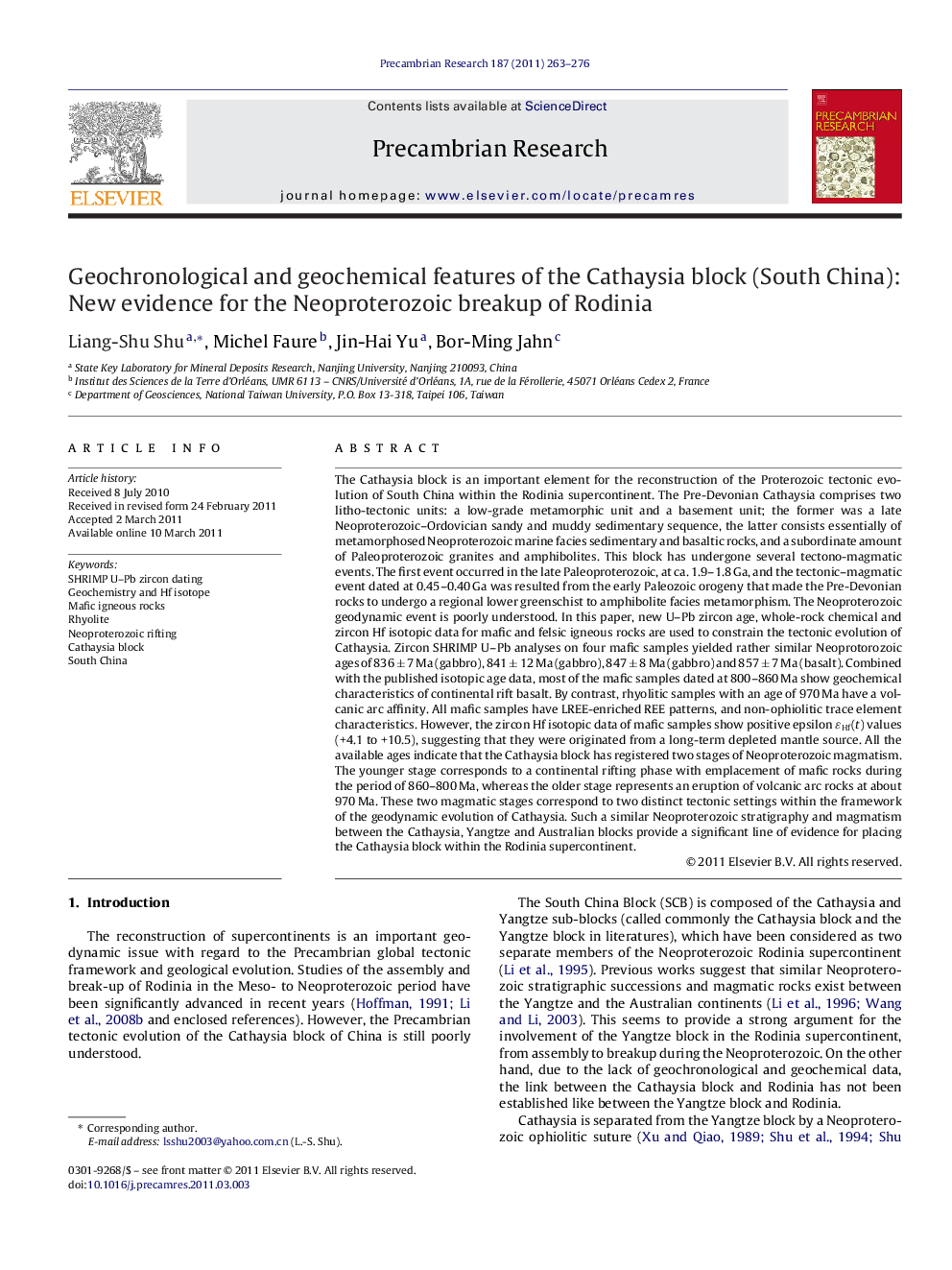| کد مقاله | کد نشریه | سال انتشار | مقاله انگلیسی | نسخه تمام متن |
|---|---|---|---|---|
| 4723802 | 1639669 | 2011 | 14 صفحه PDF | دانلود رایگان |

The Cathaysia block is an important element for the reconstruction of the Proterozoic tectonic evolution of South China within the Rodinia supercontinent. The Pre-Devonian Cathaysia comprises two litho-tectonic units: a low-grade metamorphic unit and a basement unit; the former was a late Neoproterozoic–Ordovician sandy and muddy sedimentary sequence, the latter consists essentially of metamorphosed Neoproterozoic marine facies sedimentary and basaltic rocks, and a subordinate amount of Paleoproterozoic granites and amphibolites. This block has undergone several tectono-magmatic events. The first event occurred in the late Paleoproterozoic, at ca. 1.9–1.8 Ga, and the tectonic–magmatic event dated at 0.45–0.40 Ga was resulted from the early Paleozoic orogeny that made the Pre-Devonian rocks to undergo a regional lower greenschist to amphibolite facies metamorphism. The Neoproterozoic geodynamic event is poorly understood. In this paper, new U–Pb zircon age, whole-rock chemical and zircon Hf isotopic data for mafic and felsic igneous rocks are used to constrain the tectonic evolution of Cathaysia. Zircon SHRIMP U–Pb analyses on four mafic samples yielded rather similar Neoprotorozoic ages of 836 ± 7 Ma (gabbro), 841 ± 12 Ma (gabbro), 847 ± 8 Ma (gabbro) and 857 ± 7 Ma (basalt). Combined with the published isotopic age data, most of the mafic samples dated at 800–860 Ma show geochemical characteristics of continental rift basalt. By contrast, rhyolitic samples with an age of 970 Ma have a volcanic arc affinity. All mafic samples have LREE-enriched REE patterns, and non-ophiolitic trace element characteristics. However, the zircon Hf isotopic data of mafic samples show positive epsilon ɛHf(t) values (+4.1 to +10.5), suggesting that they were originated from a long-term depleted mantle source. All the available ages indicate that the Cathaysia block has registered two stages of Neoproterozoic magmatism. The younger stage corresponds to a continental rifting phase with emplacement of mafic rocks during the period of 860–800 Ma, whereas the older stage represents an eruption of volcanic arc rocks at about 970 Ma. These two magmatic stages correspond to two distinct tectonic settings within the framework of the geodynamic evolution of Cathaysia. Such a similar Neoproterozoic stratigraphy and magmatism between the Cathaysia, Yangtze and Australian blocks provide a significant line of evidence for placing the Cathaysia block within the Rodinia supercontinent.
Figure optionsDownload as PowerPoint slideHighlights
► Two Pre-Devonian litho-tectonic units in the Cathaysia block were divided.
► Four groups of SHRIMP zircon U–Pb age at 860–835 Ma are obtained from mafic rocks.
► A rifting environment at 800–860 Ma and an arc setting at 970 Ma were recognized.
► All mafic samples from Cathaysia show non-ophiolitic geochemical features.
Journal: Precambrian Research - Volume 187, Issues 3–4, June 2011, Pages 263–276